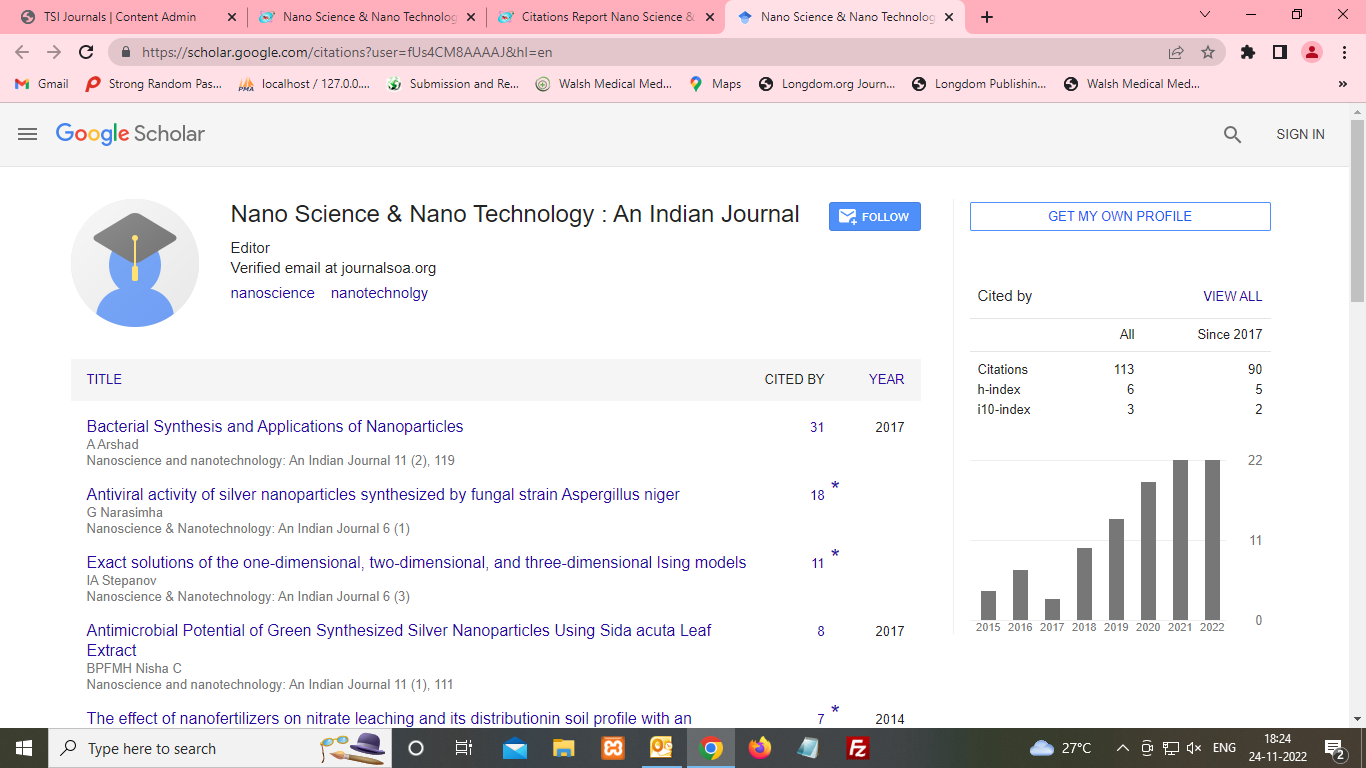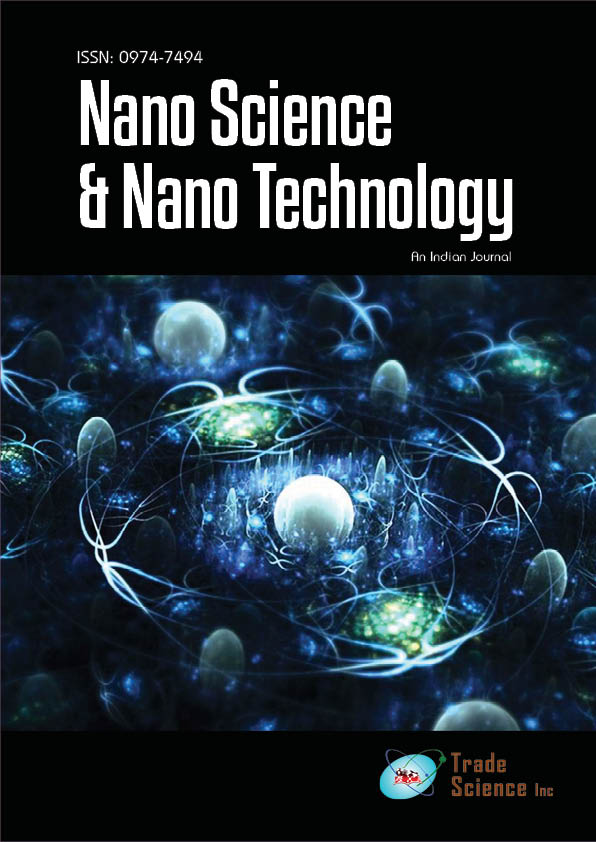Short commentary
, Volume: 16( 2) DOI: : 10.37532/ 0974-7494.2022.16(2).147Patterns of Nano-Patenting in Relation to the Product Life Cycle
- *Correspondence:
- Hader JordanEditorial Office, Nanoscience & Nanotechnology: An Indian Journal, UK.,E-mail: info@tsijournals.com
Citation:Hader Jordan. Patterns of Nano-Patenting in Relation to the Product of Life Cycle. Nano Tech Nano Sci Ind J.
Abstract
Nanotechnology is the creation and use of molecular-scale functional structures with at least one dimension measured in nm. The physical, chemical and biological characteristics of materials are drastically changed on this scale, owing mostly to quantum or surface effects. Nanotechnology is presently one of the key centers of research, development, and innovation efforts in all developed countries from an economic standpoint. According to the World Bank, global government spending in this field has expanded ninefold in the previous eight years, from $432 million in 1997 to $4.1 billion in 2005. The United States, Japan, and the European Union all invest around $1 billion in nanotechnology research and development each year. The fast advancement of nanotechnology is most likely the reason it has caught the attention of nearly every policymaker and senior executiveIntroduction
Nanotechnology is the creation and use of molecular-scale functional structures with at least one dimension measured in nm. The physical, chemical and biological characteristics of materials are drastically changed on this scale, owing mostly to quantum or surface effects. Nanotechnology is presently one of the key centers of research, development, and innovation efforts in all developed countries from an economic standpoint. According to the World Bank, global government spending in this field has expanded ninefold in the previous eight years, from $432 million in 1997 to $4.1 billion in 2005. The United States, Japan, and the European Union all invest around $1 billion in nanotechnology research and development each year. The fast advancement of nanotechnology is most likely the reason it has caught the attention of nearly every policymaker and senior executive.
Although certain nanotechnology goods have been on the market for some years, it is clear that the societal discussion on nanotechnology's benefits and hazards is still in its early stages. Regardless, it is apparent that the technology is based on several academic disciplines and will have an impact across multiple industries. Nanotechnology is "enabling" and "horizontal" at the same time. Enabling technologies, according to Grupp, are requirements for other technologies, products, and processes. Nanotechnology is a horizontal technology since it has applications in a variety of fields.
Some authors discuss nanotechnology's disruptive potential. According to Bower and Christensen, disruption occurs when technology is used to develop items with distinct performance features that aren't appreciated by existing customers. Some scientific breakthroughs shift a competitive technology paradigm. Some writers in recent literature have proposed approaches for detecting the emergence of disruptive technologies. The state text mining of scientific literature is used to uncover new information for commercial and government purposes. Walsh proposes a paradigm for disruptive technology road mapping, whereas Fleischer outlines an approach for combining technology evaluation with road mapping.
Applications
To provide new insights on nano-development, we propose a three-stage life-cycle paradigm. Lux research, nanotechnology research, and consulting firm, presented the concept of a nanotechnology manufacturing chain. This chain is built on the value provided by "nano-raw materials," which travel through "nano intermediates" before creating "nano products." Any raw material whose nanometric size provides unique qualities to this dimension is considered a nano-raw material. Nano intermediates contain nano-raw materials but are not yet intended for use by the end-user. Nano-products are commercially accessible items. This categorization scheme will be described in more detail in relation to the creation of a taxonomy. This method is appropriate since nanotechnology is "transversal," affecting several economic sectors.
The use of three steps allows us to examine nanotechnology on a broad scale without becoming bogged down in detailed commercial issues. Future-oriented technology assessments (technology foresight) simulate the future of a particular subject of study— in this example, technology. These investigations modify data obtained through qualitative and quantitative methods. The current research was carried out by using data and text mining to generate innovation indicators.The use of three steps allows us to examine nanotechnology on a broad scale without becoming bogged down in detailed commercial issues. Future-oriented technology assessments (technology foresight) simulate the future of a particular subject of study— in this example, technology. These investigations modify data obtained through qualitative and quantitative methods. The current research was carried out by using data and text mining to generate innovation indicators.
Nanotechnology is the management of matter on the nanoscale length scale and the exploitation of unique phenomena and characteristics (physical, chemical, biological, mechanical, electrical) at that length scale to create usable materials, devices, and systems. Nanotechnology has played a key role in delivering active substances to the skin, in both patch delivery and timed release application, in the cosmetics and anti-aging industries, as well as in the pharmaceutical industry. Nanoparticles, nanospheres, and nanospheres all sound futuristic. Cosmetics are no longer viewed as things that cover up or disguise flaws in one's look, indicating the revolution they sparked. Clinically validated chemicals, innovative delivery mechanisms, and excellent cosmetics aesthetics are the newest trends in these goods. Cosmeceutical goods are those that fall between beautifying cosmetics and curing and healing drugs. According to The Freedonia Group Inc. of Cleveland, Ohio, demand for formulated appearance-enhancing products is expected to grow at a rate of more than 12% per year to $2.5 billion by 2007, making cosmeceuticals one of the most active areas within the cosmetics and personal care markets.

